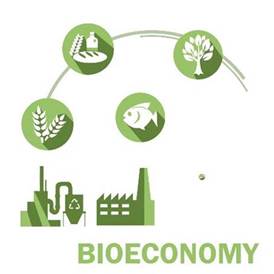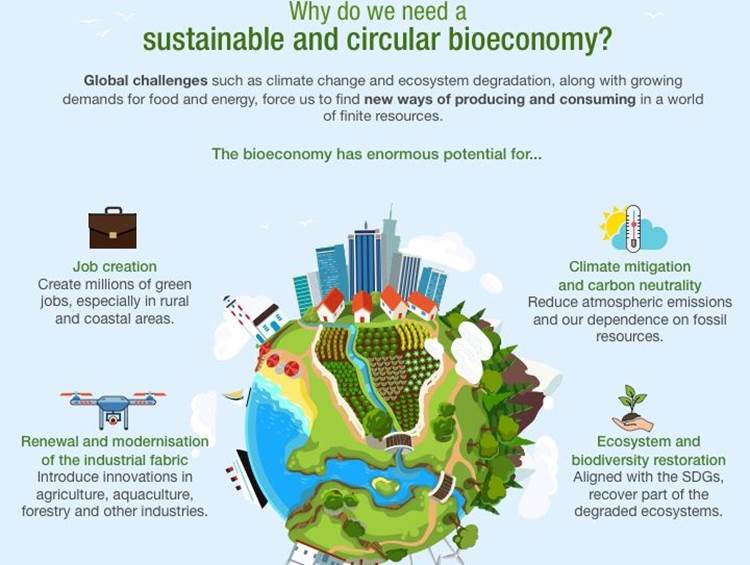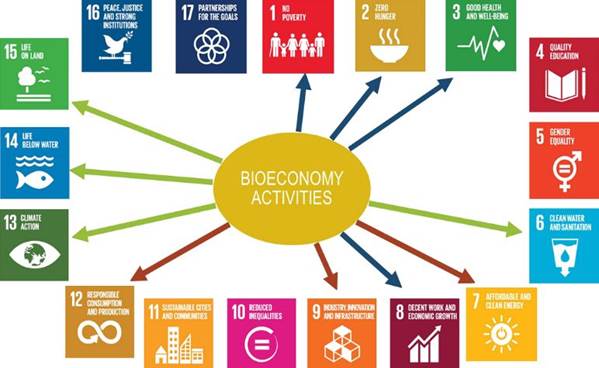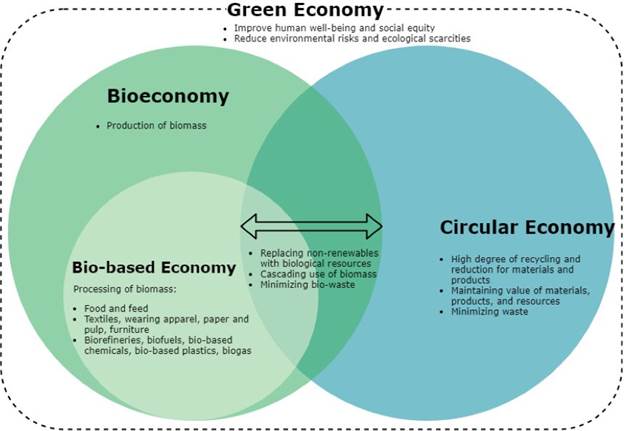Description

Disclaimer: Copyright infringement not intended.
Context
- Union Minister Dr Jitendra Singh says, Bioeconomy will be key to India's future economy over the next 25 years.
What is the Bioeconomy?
- According to the United Nations Food and Agriculture Organisation (FAO), the bioeconomy is "the production, use and conservation of biological resources, including related knowledge, science, technology, and innovation to provide information, products, processes and services to all economic sectors with the aim of moving towards a sustainable economy".

How to boost the Bioeconomy?
An appropriate bioeconomic strategy requires the development of an action plan involving local governments, national governments and supranational organisations. In order to promote such a plan, a political framework that promotes multilateralism and enables joint efforts is needed.
- Increased investment in research, innovation and training. Research on bioeconomy issues and its application tend to be disconnected. To avoid this, public-private partnerships should be promoted.
- Strengthening policy coordination and engagement. Increasing synergies and coherence between bioeconomy-related policies, initiatives and economic sectors is essential.
- Improving markets and competitiveness. This consists of providing the knowledge base needed to make the different sectors of the bioeconomy more sustainable, as well as boosting the development of clean energy.
The bioeconomy, the 2030 Agenda and the SDGs
The 2030 Agenda was adopted by the United Nations (UN) in 2015.This action plan encompasses the 17 Sustainable Development Goals (SDGs) and although all of these goals can benefit from the application of the bioeconomy, an FAO study has found four related areas:
- The bioeconomy influences the achievement of the end of poverty, zero hunger and the reduction of inequalities.
- The bioeconomy relates to the goals of clean water and sanitation, sustainable cities and communities and responsible consumption and production.
- The bioeconomy drives sustainable industry and infrastructure, as well as promoting economic growth and decent work.
- The bioeconomy promotes health and well-being and climate action, which benefits underwater life and the life of terrestrial ecosystem life.

The advantages of the Bioeconomy
The bio-economy provides solutions to the main challenges facing humanity today, almost all of which are linked to climate change:
- Ensure food security and reduce hydric stress.
- Sustainable management of natural resources to avoid overexploitation.
- Reduce dependence on fossil fuels and promote renewable energies.
- Develop actions aimed at mitigating and adapting to climate change.
- Create green jobs and maintain productivity and competitiveness.
- Reduce GHG emissions and improve public health.

Transforming India into a Bio-economy
- The use of multiple feed-stock to produce a diverse range of bio-products has created a golden opportunity to revive the Indian economy, as India stands as one of the leading producers of biomass energy. Around 18 GW of energy produced in India comes from biomass.
- This is an opportunity to reconcile with our environment and secure a sustainable and profitable future for the Indian economy. A simple change in the mind-set will foster an evergreen future across all industries and domains. To implement this effectively, it needs to be done at a fundamental level. So, ushering a bio-economy in India means working closely with India’s existing environmental protection initiatives and developmental programs launched by the Government.
- The idea of Bio-economy needs to have a deep-rooted foundation in the political environment as well. The idea needs to flourish at the policy-making level.

Here are some steps that can be taken to aid the development of biotech in India
- Forming policies for biofuel- Expediting project realization for 2G, CBC and Biodiesel
- Supporting rural development- Creating job opportunities, alternate revenue streams from farming.
- Presenting innovative ideas or solutions to bring bio-products in the market.
- Working towards building more affordable technologies for mass adoption.
Bio-industry is all set to boom in the coming years. The solution to our environmental crisis is right in front of us, and corporations have a huge opportunity to make name for themselves in the “Bio era”.
https://www.pib.gov.in/PressReleasePage.aspx?PRID=1842730
1.png)














